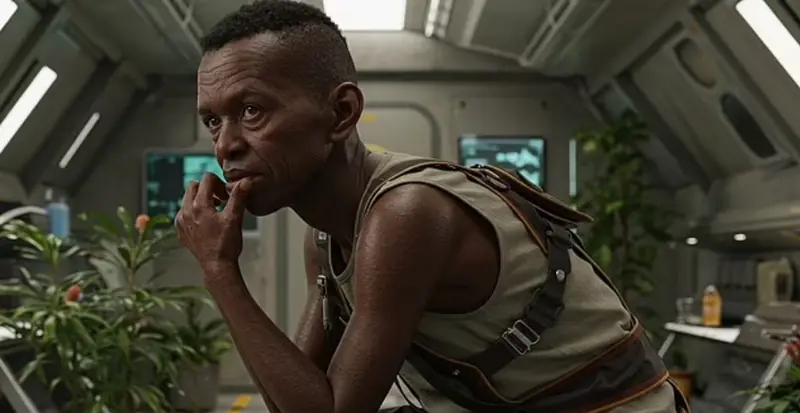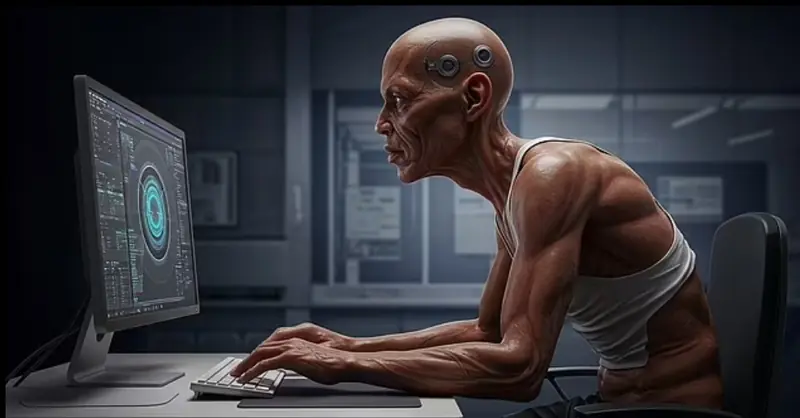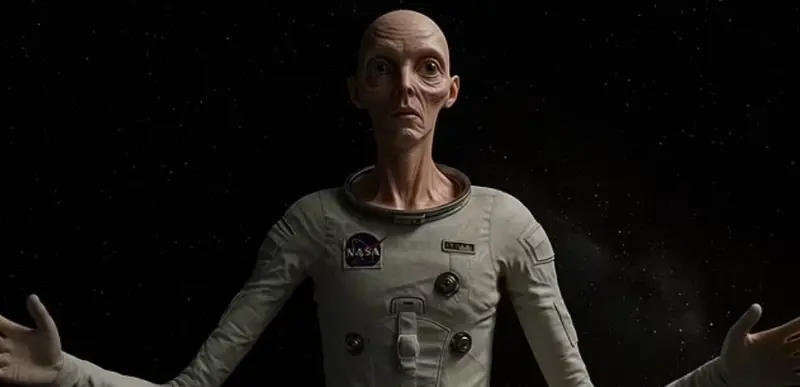
Looking back at our primate ancestors, one might assume that modern humans have reached the final stage of their evolution. However, many researchers believe that the current form of humanity is just the beginning of its story.
MailOnline examined predictions from leading scientists and, using the AI-based image generator ImageFX, illustrated what humans might look like in the year 3025.
Shorter in Stature
In the past, the primary driving force of evolution was the death of individuals before they had the chance to reproduce and pass on their genes. However, thanks to modern medicine, more people are living long enough to have many children.
As noted by Professor Mark Thomas, an evolutionary geneticist at University College London, those who have more children are more likely to pass on their genes. This could lead to shorter stature in the future.
The reason is that early sexual maturity, which allows for more children throughout a lifetime, is associated with shorter height, the geneticist explained. Ultimately, the genes responsible for early maturation and shorter stature may become more prevalent in the population.

More Attractive
As human life expectancy increases in the future, the most significant factor influencing evolution will be the number of children a person can have. Strangely enough, one potential outcome of this could be greater attractiveness among men.
Professor Thomas explained, “Typically, females choose their mates. But in a patriarchal society, as is the case in many parts of the world, the choice and control ultimately remain with men.” However, as society liberalizes, women will have more opportunities to choose their partners.
In his view, women will pay attention to a man’s intelligence and success, as well as his appearance. Over the next few thousand years, more attractive men will be more likely to pass on their genes, leading humanity to become more aesthetically pleasing.

Similar in Appearance with Darker Skin
One of the most significant changes anticipated by scientists is that humans will become more homogeneous in appearance.
Throughout human history, distinct populations have remained isolated from one another. However, in the future, individuals from different ethnic groups will increasingly intermingle.
Dr. Jason Hodgson, a bioinformatics expert at Anglia Ruskin University, noted, “Interracial marriages are becoming more common.” He stated that this means the average person of the future will be genetically more diverse, inheriting traits from a larger number of populations. Consequently, people will look more alike and have darker skin.
Technologically Enhanced
Dr. Hodgson doubts that human evolution will occur naturally in the distant future. “We already have the technology for targeted gene editing using CRISPR-Cas9. This allows us to significantly alter the genome as we wish,” the scientist said.
While most scientists consider this unethical, future generations may not be as scrupulous. Thus, with some intervention, people might, for example, develop darker skin with higher melanin levels to protect against harmful ultraviolet radiation.
Additionally, technology will help individuals choose more options for their appearance based on fashion and cultural trends, as reported by the Daily Mail.

Smaller Brains
Robert Brooks, a professor of evolutionary biology at the University of New South Wales (Australia), believes that the human brain will eventually shrink. According to his theory, as computers take on more computational and social tasks, the need for a large brain will diminish.
Dr. Nicholas Longrich, a paleontologist and evolutionary biologist at the University of Bath (UK), compared the evolution of human brains to that of domesticated animals: “As a result of domestication, sheep lost 24 percent of their brain mass, cows lost 26 percent, and dogs lost 30 percent.”

Adapted to Space
If a portion of humanity were to venture into space, it is quite possible that they would gradually become separated from the Earth’s population. Consequently, the “space” population would evolve differently.
Dr. John Hawks, an anthropologist at the University of Wisconsin-Madison (USA), explained, “Creating a sustainable population of humans in another star system after a journey of thousands of years will be a challenging task. But such a scenario would create the possibility of speciation.” This is not surprising, as, for example, on Mars, humans would receive only 66 percent of the sunlight and 38 percent of the gravitational force present on Earth.
To adapt to low-gravity conditions, people are likely to become taller, and their arms may lengthen.

Interestingly, as reported by NASA, astronauts grow about three percent taller during their first few days in space. This is because, in low-gravity conditions, their spines stretch.
Additionally, space settlers may become paler to maximize vitamin D absorption in low light. Their eyes will be larger and more sensitive, as they will need to distinguish objects in poor visibility. However, it is also possible that, due to unforeseen technological developments, humans will evolve in entirely different ways.
